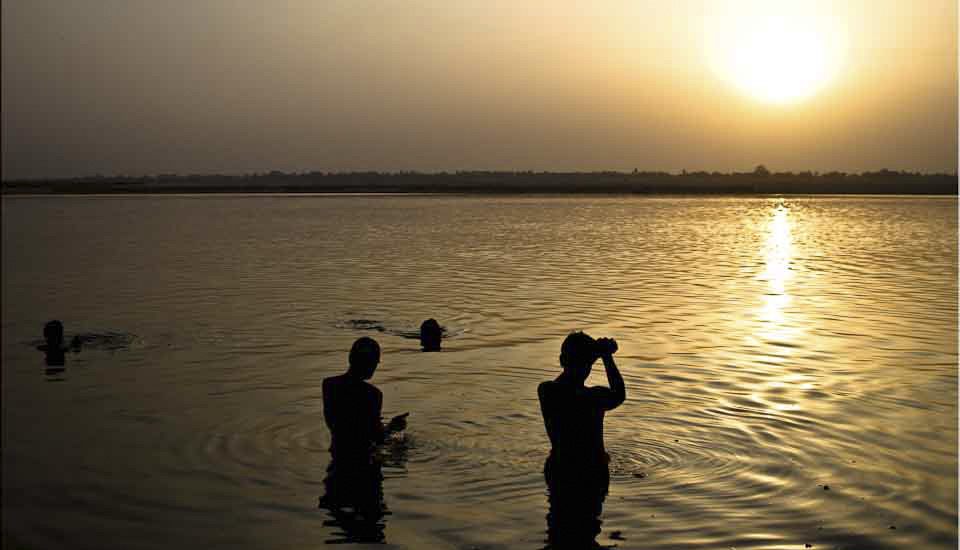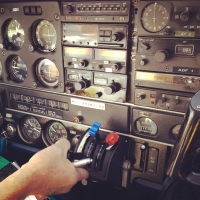.jpg)
Pura Taman Saraswati
It’s a calming scene: from our seats in Café Lotus in Ubud, we look across the lotus ponds to the beautiful water temple at the end of the path. Everywhere you go in Bali, there is a beautiful balance between the arts (including architecture) and the natural environment.
It’s easy to fall in love with Bali.
The beaches are beautiful, the food is wonderful, the people are friendly, and the culture is unique and richly rewarding.
This little Indonesian island was doubly blessed: firstly, with abundantly productive fields, and secondly, with people who were cooperative, rather than overly competitive, and who therefore shared the products of those fields. The relatively equitable division of food and labour has allowed people time to develop and expand their religious and cultural traditions, and to express these through art, carving, music and dance. Creativity and artistic expressions are nurtured and valued: the evidence of this is in the buildings; in the artworks in the museums and the markets; in the dance and storytelling; in the ritual religious expressions; and even in the fabrics of the the clothing.
Everything on the island is stamped with distinctive Balinese style.
.jpg)
Fallen Frangipani
Nothing says “Tropical Paradise” to me quite like a sweet-smelling fallen frangipani (plumeria) blossom on a sandy walkway! (iPhone6)
.jpg)
Chairs in the Sun – Sanur Beach
Bali has a reputation as a party paradise for young adults, and has long been a centre for night life and clubbing – but it is easy enough to avoid the noise and crowds! (iPhone6)

Sanur Sunrise
The sunrises and sunsets can be spectacular, but Bali is only eight degrees south of the equator, so you have to be quick! (See: Chasing Sunset) (iPhone6)

Temple Pieces
The ornate curlicues on temples and houses start somewhere, as we discover when we are bicycling through the Balinese countryside (see: A Ride through the Rice Fields).

Chipping off the Rough Bits
Even though the cement pieces are cast in forms, there is a lot of labour in tidying them up …

Sanding
… and sanding them smooth.

Baby in the Brickyard
Making cement pieces is a family business – and youngsters are expected to fit in.

Water Feature
Evidence of intricate concrete- and stone-work is everywhere; …

Ganesh in the Garden
… both these water-fountain sculptures are in the gardens of our Ubud guesthouse.

Bull and Griffin
Artistic expression is part of Bali’s lifeblood. The Neka Art Museum in Ubud typifies the island’s devotion to the arts: this collection of paintings and sculptures was started by Ubud native, collector and art dealer, Suteja Neka.

Art Museum Windows
The interior spaces are as beautiful …

Neka Art Museum
… as the buildings and grounds.

Mutual Attraction by Abdul Aziz
… to contemporary.

Offering to the Rice Goddess
The collected works range from traditional …

Lotus Pond – Museum Puri Lukisan
Bali’s oldest art museum is set among lotus ponds …

Museum Puri Lukisan
… and terraced gardens.

Wooden Woman
The extensive collection in the multiple buildings that comprise the Museum Puri Lukisan cross all periods. My favourites were the works by Ida Bagus Nyana (1912–1985).

Woodcarver
Meanwhile, in Mas Village – not far from Ubud – there are woodcarvers hard at work producing art, religious iconography, and trinkets for tourists.

Woodcarvers
It’s exacting work. Not all of the products are to my taste, but enough of them are, so that walking into an atelier like this is risky: I always leave with at least one new carving, It’s gratifying when the Australian Quarantine Inspectors cast their eagle-eyes over my purchases, and pronounce: “That’s a nice piece!”

Wooden Torsos
The artisans of Mas Village are renowned for the quality and aesthetics of their carvings. (iPhone6)

Batuan Temple Entry in the Rain
In another artisan village, Batuan – known for its painting style – the local temple is itself, a work of art.

Candi Bentar – Batuan Temple
A classical candi bentar, or split gateway, leads into the 11th century temple.

Bale – Pavilion
The shrines of Batuan Temple are neatly laid out in the 0.65Ha (1.6 Acre) complex.

Braving the Rains
Even in the rain, there are plenty of visitors admiring the well-preserved sandstone structures.

Shrines in the Jeroan (Inner Courtyard)

Spinning Wheel
Another area of creative endeavour is textile production; …

Woman Weaving
… much of it using traditional methods.

Painting Prada
Dating back to the East Javanese kingdom of Majapahit, prada or perada is the ancient technique of decorating cloth with gold dust or gold leaf mixed into a glue paste. Today, the paste is more likely to be made with gold paint – but it is still a time-consuming process.

Measuring Lengths
Batik here also traces its roots back to Java, but many of the local designs are immediately recognisable as Balinese.
These works are all so lovingly and painstakingly produced, it is no wonder Bali attracts artists from around the world to collaborate and deepen their own creative processes.
 It’s also no surprise that I always leave the country with a suitcase full of carved wood and printed fabrics.
It’s also no surprise that I always leave the country with a suitcase full of carved wood and printed fabrics.
It’s one way of taking a little of that Balinese style home!
Photos: 21January-04February2017


































.png)

